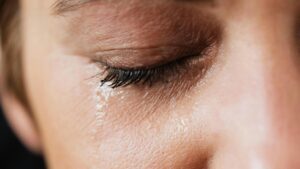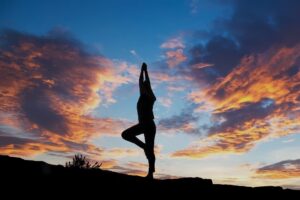Yoga For Anxiety – Exploring the Science, Practice, and Real-Life Benefits
In today’s fast-paced world, anxiety has become an increasingly common mental health issue affecting millions of people globally. From racing thoughts to restlessness, anxiety disorders can significantly interfere with daily life. While traditional treatments such as therapy and medication remain effective for many, alternative approaches like yoga are gaining recognition for their holistic benefits. But can really help with anxiety? Let’s explore what science, tradition, and practice reveal.
Understanding Anxiety: A Modern Epidemic
Anxiety encompasses more than sporadic stress or worry. It’s a persistent feeling of fear or dread that can interfere with day-to-day activities. Symptoms range from rapid heartbeat, sweating, and trembling to mental symptoms like excessive worrying, irritability, and difficulty concentrating.
Anxiety disorders, according to the World Health Organization (WHO), are among the most prevalent mental illnesses worldwide. The causes can be genetic, environmental, or biological, but regardless of the origin, finding sustainable relief is essential for mental wellness.
Yoga: More Than Just Physical Exercise
It is an ancient mind-body practice that originated in India over 5,000 years ago. Although it is frequently associated with physical postures (asanas), true yoga is a system that encompasses:
-
Breathing techniques (pranayama)
-
Meditation (dhyana)
-
Mindfulness and awareness
-
Ethical disciplines and lifestyle choices
The goal of the practice is to balance the mind, body, and spirit. When applied correctly, yoga goes beyond flexibility and fitness — it becomes a powerful tool for emotional regulation, self-awareness, and inner peace.
Scientific Evidence: What Research Says About Yoga for Anxiety
Over the past two decades, there has been a surge in scientific interest in yoga as a therapeutic intervention for mental health. Multiple studies and clinical trials suggest that it can reduce symptoms of anxiety and improve overall emotional well-being.
-
Reduction in Cortisol Levels
Cortisol is commonly known as the “stress hormone.” Chronic anxiety is often associated with elevated cortisol levels. Studies show that regular yoga practice helps reduce cortisol, thereby promoting a calmer mental state.
-
Enhanced Parasympathetic Nervous System Activity
It activates the parasympathetic nervous system — the “rest and digest” mode — counteracting the “fight or flight” response linked with anxiety. Practices like deep breathing and gentle stretching support nervous system balance.
-
Improved GABA Levels
A 2010 study published in the Journal of Alternative and Complementary Medicine found that yoga increases levels of gamma-aminobutyric acid (GABA) in the brain, a neurotransmitter associated with reduced anxiety.
-
Mindfulness and Self-Awareness
Yoga promotes mindful awareness, which helps individuals recognize and observe anxious thoughts without becoming overwhelmed. This practice of non-reactivity can significantly improve mental resilience.
How Yoga Helps with Different Types of Anxiety
Yoga for Anxiety isn’t a one-size-fits-all remedy, but it can be tailored to help with various forms of anxiety:
-
Generalized Anxiety Disorder (GAD)
Individuals with GAD experience persistent worry and tension. Gentle poses combined with breathing exercises help ground the body and calm the mind.
-
Social Anxiety
Yoga can increase body confidence and promote inner calm, making it easier for individuals to manage social interactions. Group classes also offer a sense of community and support.
-
Panic Disorders
Breathing techniques (especially alternate nostril breathing) can help control the breath, which is often shallow and erratic during panic attacks.
Trauma-sensitive – Specialized form designed to create a safe environment for trauma survivors. It focuses on empowerment and bodily autonomy, which are critical in trauma recovery.
Practical Techniques for Managing Anxiety
If you’re new to, starting with simple, accessible practices can be immensely beneficial. Here are some core components that specifically help with anxiety:

-
Nadi Shodhana (Alternate Nostril Breathing): Balances the brain hemispheres and calms the nervous system.
-
Bhramari (Bee Breath): Produces a soothing sound that vibrates the mind into a more peaceful state.
-
Ujjayi breathing, also known as ocean breathing, encourages mindful focus and generates internal heat.

-
Child’s Pose, or Balasana, offers a comforting sense of grounding and relaxation, promoting feelings of safety and release.
-
Legs-Up-The-Wall (Viparita Karani): Promotes circulation and relieves fatigue.
-
Cat-Cow Stretch: Connects breath with movement, easing physical and mental tension.
-
Paschimottanasana, also known as the seated forward fold, helps elongate the spine and soothe the mind.

-
Start by observing your breath and sitting still for just five to ten minutes
-
Guided meditations or apps like Insight Timer can help beginners stay focused.

-
A sense of calm can be reinforced by repeating calming phrases like “I am safe,” “This too shall pass,” or traditional Sanskrit mantras like “Om Shanti.”
Real-Life Testimonials: Stories from Yoga Practitioners
Many individuals report transformative benefits after incorporating yoga into their daily routines:
“Yoga became my sanctuary. After years of living with social anxiety, the breathing techniques helped me regulate my emotions and feel more confident in public.” — Priya, 28, India
“I was skeptical at first, but even 15 minutes of yoga a day started making a difference. My panic attacks reduced, and I sleep better than I have in years.” — Marcus, 35, UK
These anecdotal stories echo what science suggests: yoga is more than a wellness trend—it can be a lifeline for those struggling with anxiety.
Tips for Getting Started with Yoga for Anxiety
If you’re considering yoga as part of your anxiety management toolkit, keep these tips in mind:

Don’t aim for an hour-long session on your first day. Even 10 minutes of mindful movement or breathing can make a difference.

Find a quiet corner at home, use a yoga mat, light a candle, or play soft music to enhance the ambiance.

For anxiety, gentler yoga styles like Hatha, Restorative, or Yin Yoga are more effective than vigorous forms like Power Yoga or Ashtanga.

Like any therapy, yoga works best when practiced regularly. Aim for at least 3 sessions per week.

Attend a class with a certified instructor or use reputable online platforms. If you have severe anxiety, consider yoga therapy sessions guided by mental health professionals trained in yoga.
Yoga as a Complement, Not a Replacement
It’s important to note that yoga should not replace prescribed medications or professional therapy. Instead, it acts as a complementary therapy, enhancing the benefits of other treatments. Always consult with your doctor or mental health provider before making major changes to your treatment plan.
Yoga For Anxiety -A Holistic Path Toward Inner Calm
So, can yoga help with anxiety? The answer is a resounding yes — when practiced mindfully and consistently, yoga offers a natural and holistic way to manage stress, regulate emotions, and reconnect with inner peace. From scientific validation to centuries of anecdotal wisdom, yoga stands as a gentle yet powerful practice for transforming the anxious mind.
Whether you’re navigating occasional stress or chronic anxiety, rolling out a yoga mat might just be one of the most healing decisions you make — one breath, one pose, and one peaceful moment at a time.
Lorem ipsum dolor sit amet, consectetur adipiscing elit. Ut elit tellus, luctus nec ullamcorper mattis, pulvinar dapibus leo.





